The collages shown below were created by students in the CS 120 course, and judged
by their peers to be the best in each section of the course. Although these could
have been created using an image-editing program, these students have written the
code themselves to create these collages programmatically by manipulating individual
pixels.
"Watercolor" by Stefanie Clark
Junior; Creative Writing major, and Japanese and Computer Science minors
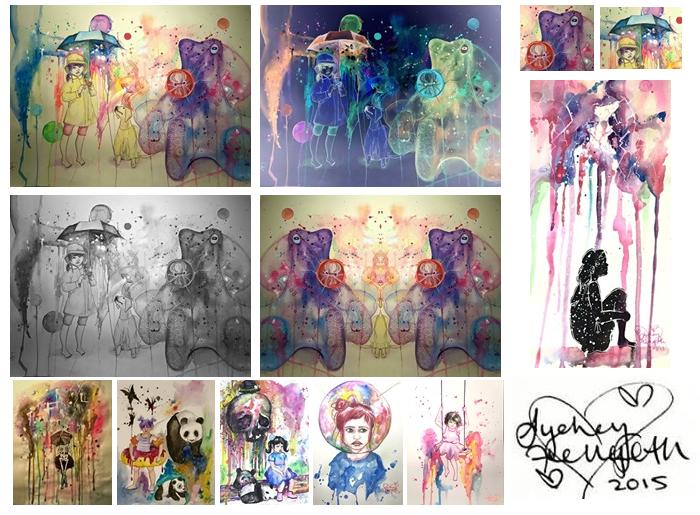
Artist's statement: "I found spacing of the different images to be challenging. Having the opportunity to
represent a friend's art creatively is rewarding."
|
"The Beach" by Casey Jones
Junior; Computer Technology and Business Administration majors
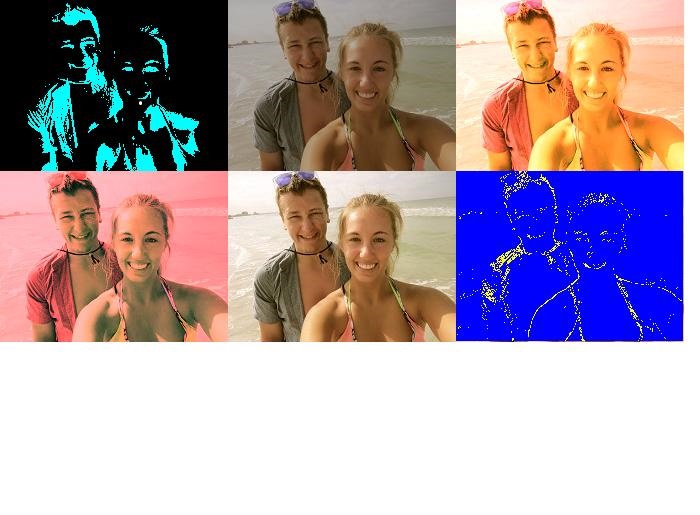
Artist's statement: "The most challenging part about creating this collage was choosing the picture and
re-sizing it to fit the requirements. The most rewarding part was the end result, a nice collage of my
girlfriend and me on spring break."
|
"Living Abroad: a Technical and Creative Adventure" by Marisa Lozano
Junior; Animation major and Computer Science minor
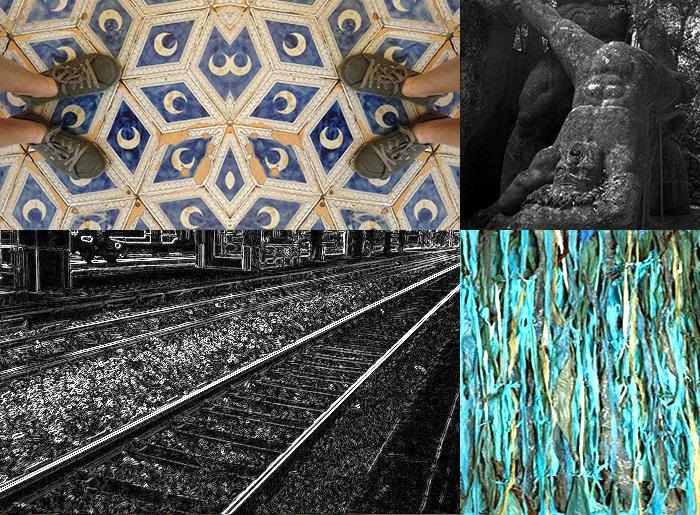
Artist's statement: "I found trying to align the pictures the most difficult part of this assignment. If something was not perfectly
placed, then the entire code would break. I also had some difficulties getting the different modified functions to show up on the
canvas because I didn't return the functions. The most rewarding part was getting all of the pictures to align and be modified.
I spent a lot of time trying to figure out which effect I wanted to use for each picture. Seeing the final result and knowing I
created that using just code was very satisfying."
|
"Richard the Cat" by Dakota Malchow
Junior; Telecommunications major, and German and Computer Science minors
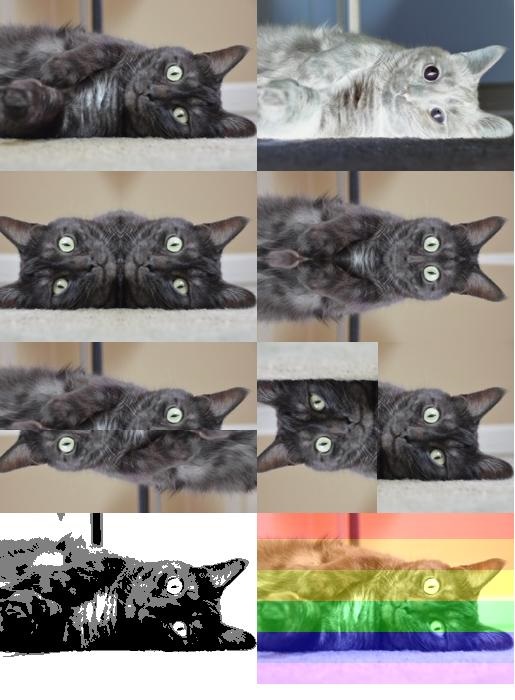
Artist's statement: "There were many problems with fitting multiple pictures into the certain size of canvas, but luckily
it all worked out! The most rewarding part was definitely being able to see how everything came together when I was done."
|
"Code of Color" by Jeremy Meadows
Freshman; Computer Science major
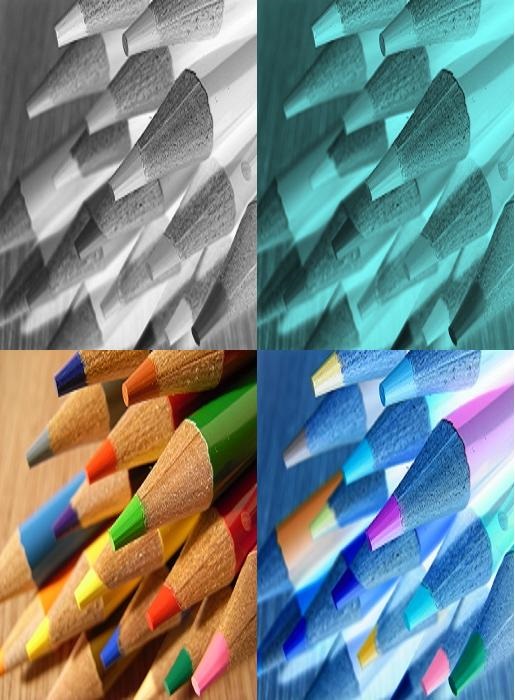
Artist's statement: "The most challenging part of creating the collage was getting the code to place the image onto the canvas
in the right spot. The most rewarding part of creating the collage was seeing the finished collage for the first time."
|
"Waterfalls" by Michael Nielsen
Junior; Computer Science major
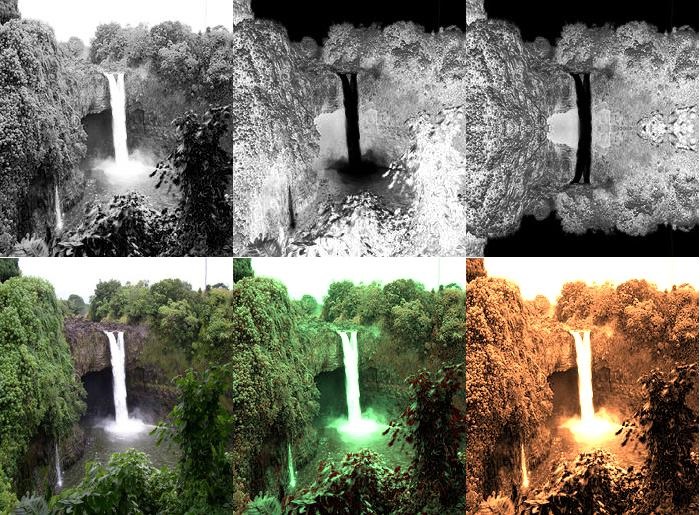
Artist's statement: "Initially I had some difficulty mirroring one of the images, but eventually I was able to get it to work.
The most rewarding part was seeing everything work as intended."
|
"Thinking around the corner" by Matthias Raess
PhD student; Applied Linguistics
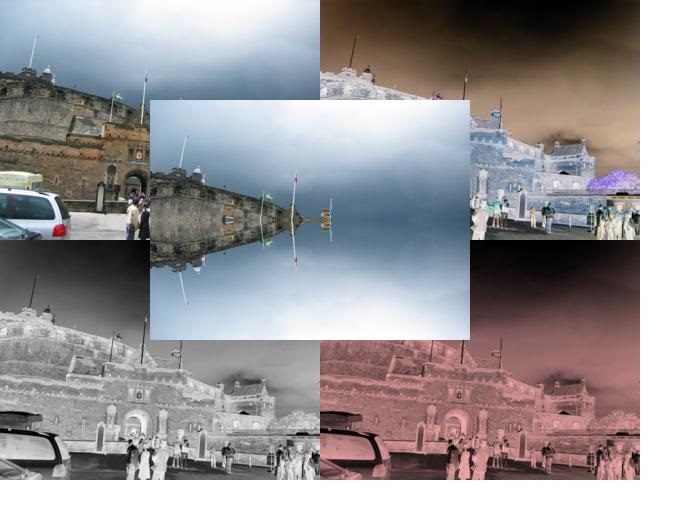
Artist's statement: "The most challenging thing about the collage was the picture selection, other than that it was
pretty straightforward. The most rewarding part of the collage was learning the underlying code and overarching coding schemes."
|
"Moonscapes" by Cassandra Reed
Senior; Physics major
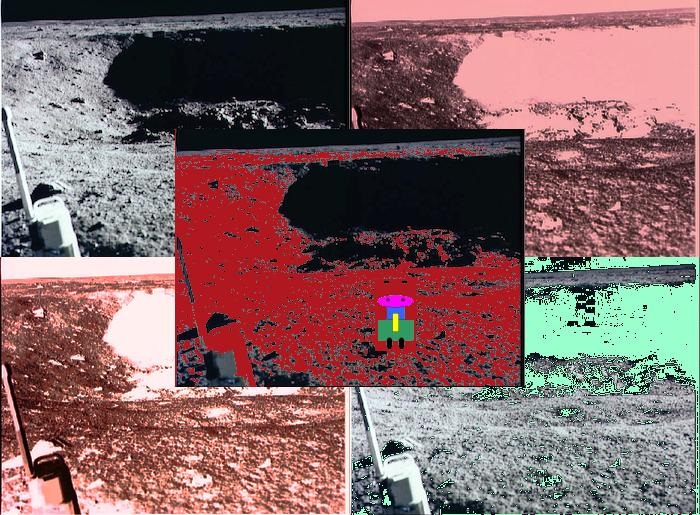
Artist's statement: "At first I struggled with how to have one program modify the same photo multiple times.
It seemed easy to do it with different photos until I realized I could simply create different variables that
link back to the same photo and modify each variable separately. This was the first project that seemed not
to have one correct answer, so once I got past the hangup above, I actually had fun trying different manipulations
to see what looked best in the result."
|
"Unplanned Pixel Placement" by Michael Adair
Freshman; Computer Science major
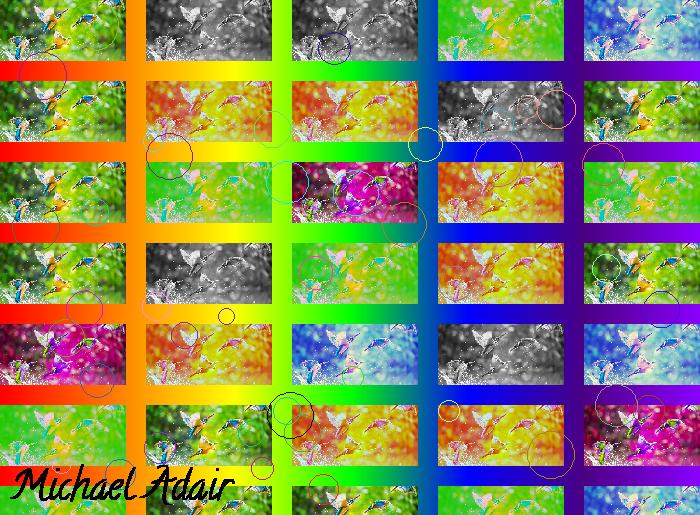
Artist's statement: "The most challenging part of my collage was deciding what I wanted to do along with the creation of the rainbow gradient function.
The most rewarding part of my collage creation was seeing the final product and finally feeling content with the outcome. I also felt proud of the
fact that no two generated collages created by my program will be the same."
|
"Coding Fish" by Vanessa Covarrubias
Freshman; Computer Science major, and Linguistics minor
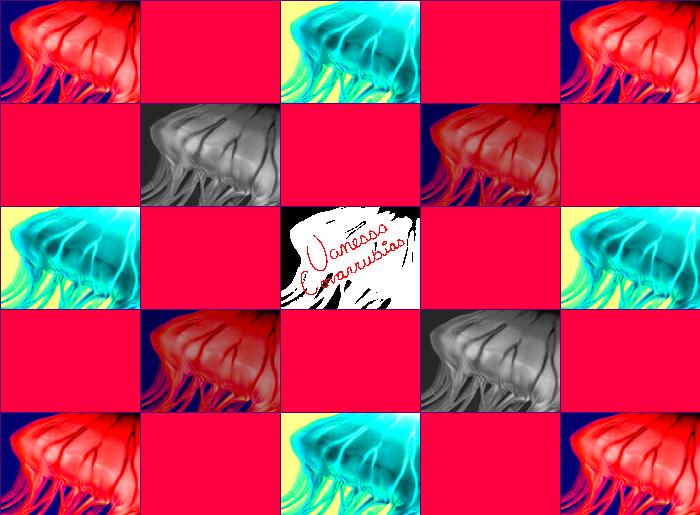
Artist's statement: "I think the most challenging aspect of the project was figuring out how to position the modify pictures in my canvas.
I realized that the easiest solution was to look for the specific pixels to place my picture in. I had a lot of fun modifying my pictures
once I figured out how to position them in the canvas. I found the end product to be the most rewarding part of the collage creation."
|
"Invasion" by Matthew McDonough
Freshman; Computer Science major
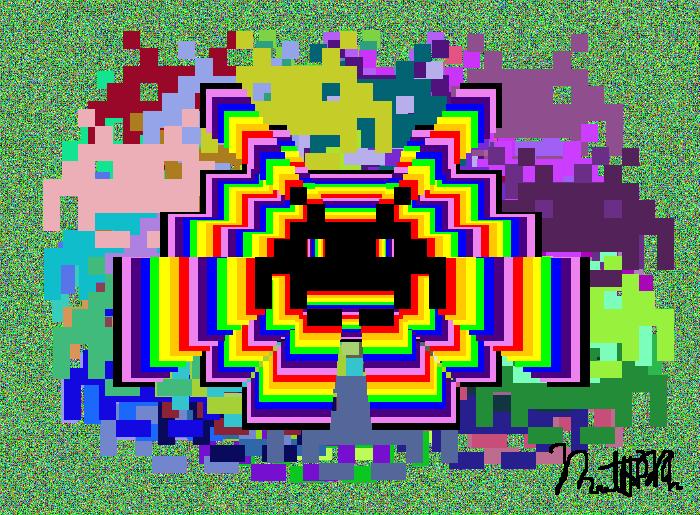
Artist's statement: "The most challenging aspect was getting the randomness to look good within the picture.
The most rewarding part was seeing what my program could do with the randomness aspect, it was really cool seeing
an awesome output without a ton of hardcoded values."
|
"Red, White, and Blue-Mark" by Jimmy Schraeder
Sophomore; Computer Science major
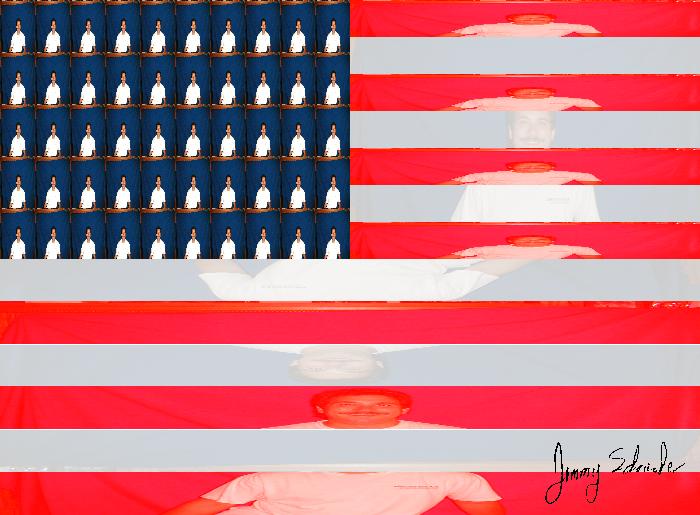
Artist's statement: "The most challenging part was making the stripes in my collage. I wanted to make the majority of the stripes different from each other,
instead of just making all the stripes in the same style. The most rewarding part was seeing my collage come together to make up the great symbol of America."
|
"Nature In The City" by Carmen Grande Pardo
Freshman; Physics major
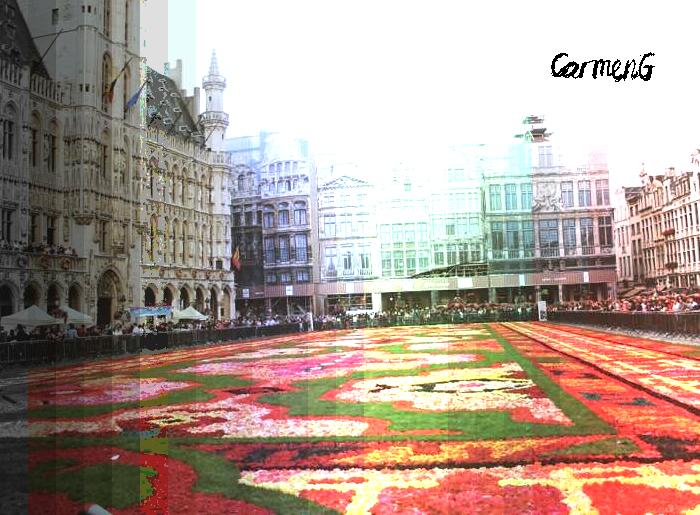
Artist's statement: "Adding my signature on the correct corner took me some time. Also, changing the slices to get to like the combination
of their colors was challenging. Seeing that we can do whatever we want with pictures and that we can be as creative as we want with them with just a computer is rewarding."
|
"Tribute to TesseracT" by Braden Hickok
Sophomore; major undecided
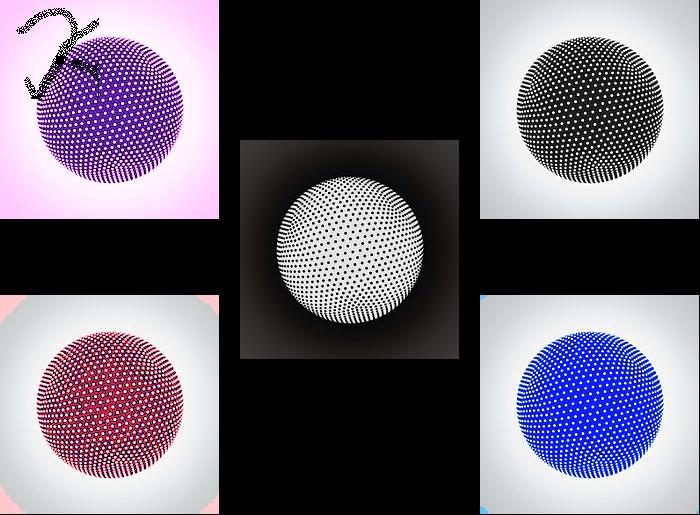
Artist's statement: "The most difficult part of this project was using different code to accomplish similar tasks. There are many different
ways that you can make a pixel red, for example, and it was tough for me to decide which code to use in order to achieve each image's
signature color. In the end I tried not to over-complicate things with excessive code, and the result was aesthetically simple and clean.
Sometimes the simplest answer is the best answer!"
|
"Fractal" by Jeremy Nager
Freshman; Computer Science major
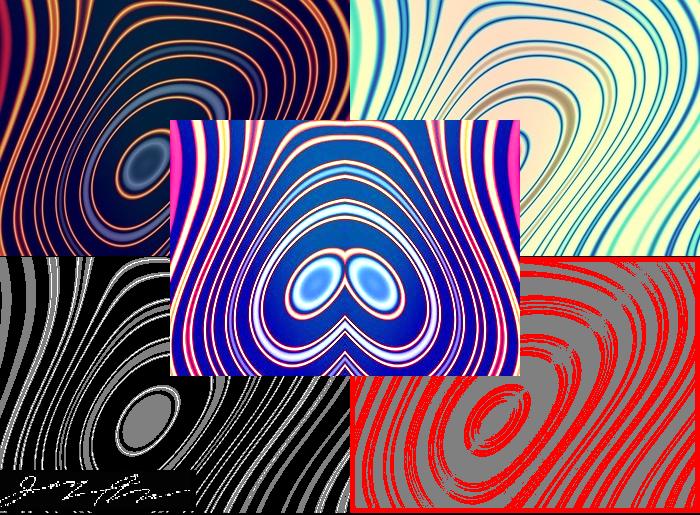
Artist's statement: "As a non-creative person, the most difficult part was finding what image to use for my piece and figuring
out exactly what I wanted to make. Seeing the final piece appear without errors was very rewarding as well as being selected for the art show."
|
"Snake Arrangement" by Madeline Van Ness
Freshman; Computer Science and Honors College majors
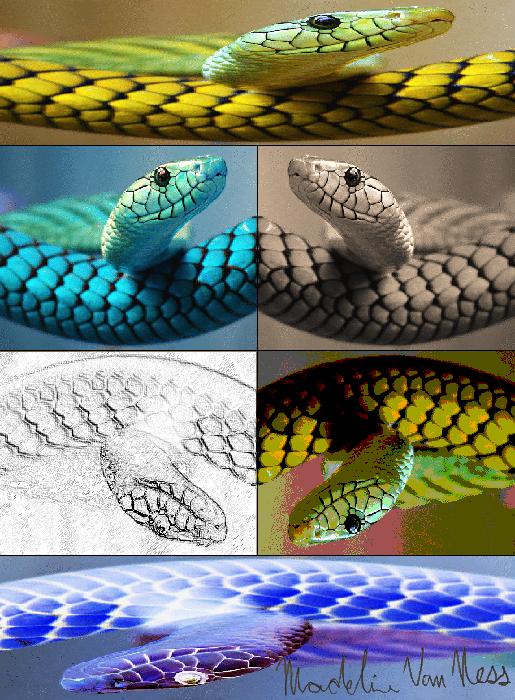
Artist's statement: "The most challenging part of this project was getting my scaling function to work properly.
The most rewarding part of this project was when I ran my final code and it worked properly -- no more errors or yellow highlights!"
|
"Ring Reaper" by Daniel Isenberg
Freshman; Physics major
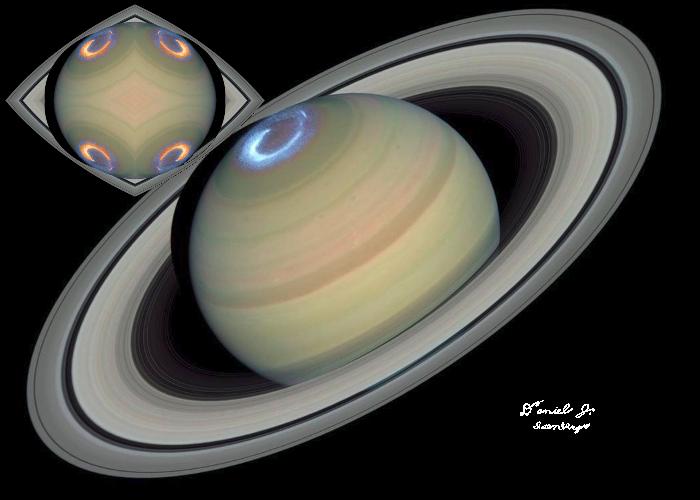
Artist's statement: "For me, the most difficult aspect of this project was working within the size constraints.
Pictures like the one I chose to modify are far more impressive from a 'shock and awe' stand point when in high
resolution, and having a very limited picture size to work with presented some challenges with trying to create
the sort of visual effect I wanted. 'What was the most rewarding?' It seems like this question just begs to be answered with 'when I got it to
work all the way' or something like that, and that moment is undeniably rewarding. That being said, by the time
it is completely finished, you are probably getting to the point where you expect it to work the next time you run
the program. The really rewarding part is getting the helper functions to work individually, because that is where
most of the work is being put in, and where you get most of the problems."
|
"Parrot Pete" by Gerard Shadiow
Sophomore; Pre-Engineering major
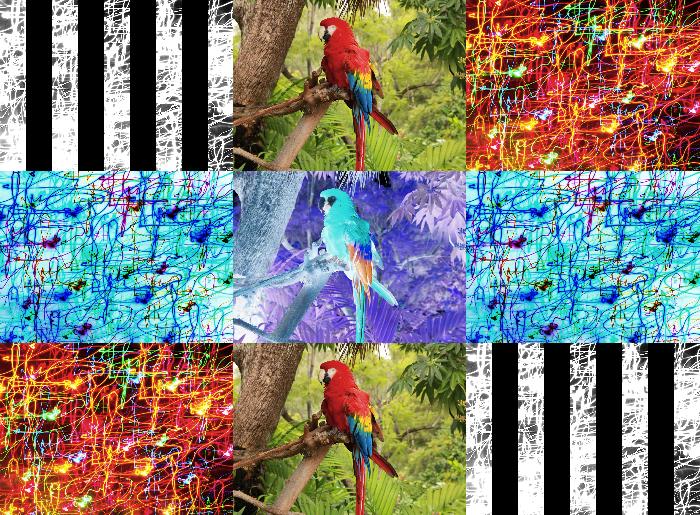
Artist's statement: "The hardest part of the project was getting the code to work efficiently. At first JES, the program
used to communicate code to the computer ran for about 10+ minutes trying to come up with the canvas. After playing around
with the code I got it to work in about 15 seconds or so. The most gratifying part of creating the collage is being voted
by my peers to be in the Section Art Show to show my work to everyone that wants to see it. The most rewarding part had to
be seeing my code work to produce the canvas the first time."
|
"Old Fashioned Vegetable" by Mitchell Showalter
Freshman; Computer Science major
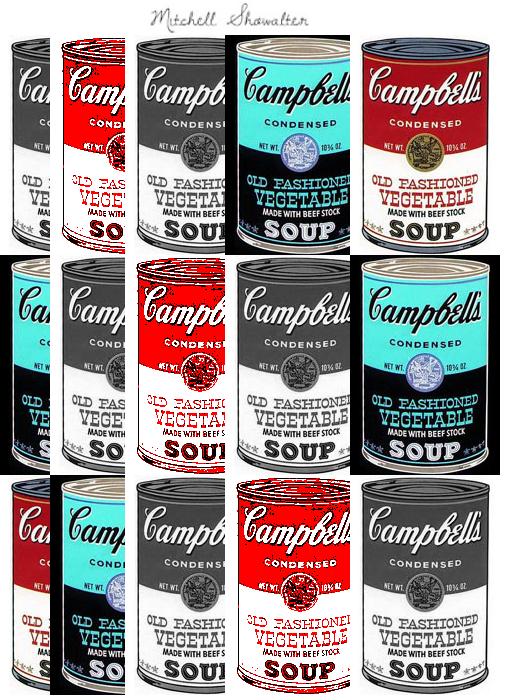
Artist's statement: "The most challenging piece of the collage was organizing it all and changing each picture separately.
The most rewarding part of this project was getting to see it displayed in the art show, it means a lot to me."
|


















